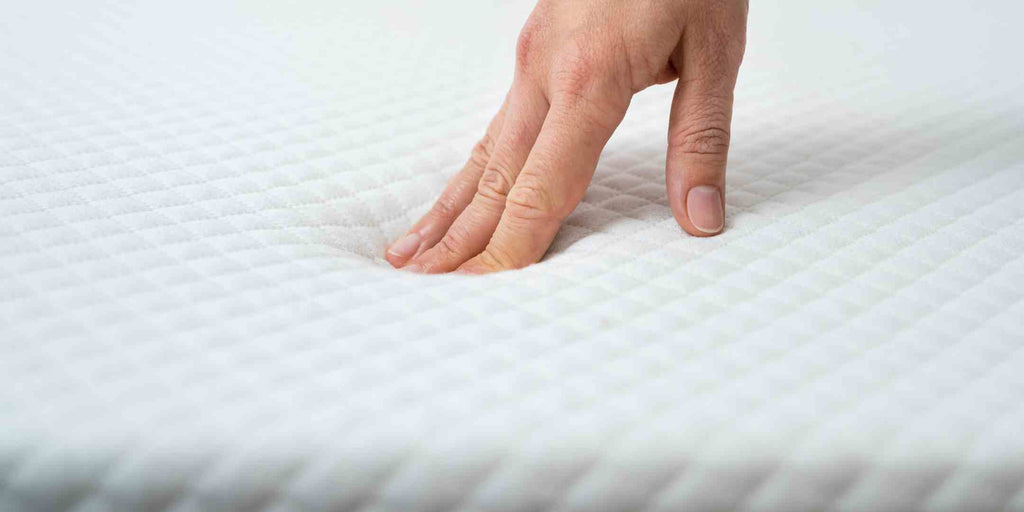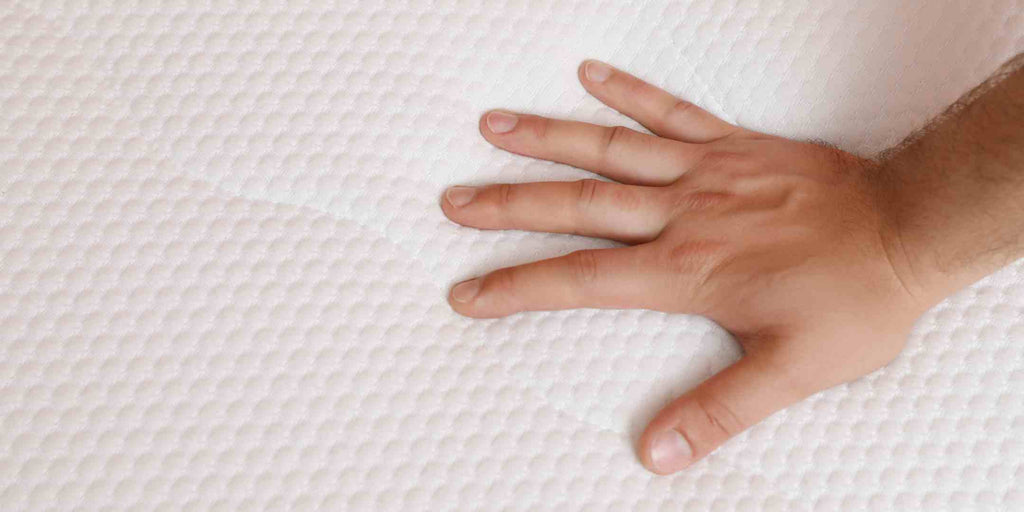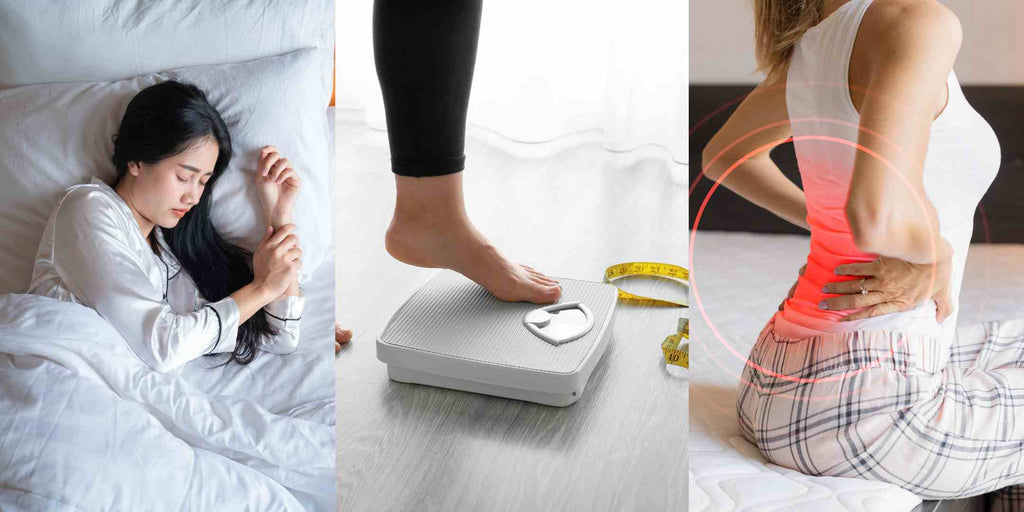A good night's sleep is often the key to waking up refreshed and ready to tackle the day ahead. One of the most important factors influencing the quality of your sleep is none other than your choice of mattress. But with plenty of options available in the market, each promising a better night's sleep, how do you navigate this sea of choices to find the perfect mattress for your needs?
The answer is understanding the subtle yet significant differences in mattress firmness levels. While soft, firm, and medium-firm mattresses may all seem similar at first glance, they offer different sleep experiences, each catering to specific preferences and requirements.
Understanding Mattress Firmness Levels
Soft Mattress

Soft mattresses are typically crafted from memory foam or plush pillow-top layers to facilitate a substantial sink-in sensation. These materials conform to the natural contours of your body, resulting in a cradling effect that envelops you as you rest. This pronounced sink-in feeling can be incredibly enticing for individuals who relish the luxurious embrace of a plush, hugging mattress surface during their sleep.
Firmness Level: 3-4/10
Pros: Soft mattresses excel at providing pressure relief, making them ideal for individuals with joint pain. They are particularly well-suited for side sleepers as they promote proper spinal alignment and alleviate pressure on the hips and shoulders, enhancing overall comfort and sleep quality.
Cons: Soft mattresses may not provide sufficient support for back and stomach sleepers, leading to potential discomfort and improper spinal alignment. Their deep sink-in feeling can hinder ease of movement and get out of bed, and they can be less durable, with a higher risk of developing body impressions over time.
Firm Mattress

Firm mattresses are typically constructed using dense materials like latex or innerspring coils, resulting in a surface with minimal sink-in. These mattresses provide a solid, supportive feel, often with little to no plush cushioning on the surface.
Firmness Level: 7-8/10
Pros: Firm mattresses offer excellent support, particularly for individuals who sleep on their back or stomach, and they help maintain proper spinal alignment and distribute body weight evenly, reducing the risk of discomfort or pain. Additionally, firm mattresses are often more durable and less prone to developing body impressions, ensuring a longer lifespan.
Cons: Despite their benefits, firm mattresses may not provide adequate pressure relief, which can be a drawback for side sleepers or those with joint issues. The lack of cushioning can be less forgiving on pressure points like the hips and shoulders. Some individuals may find firm mattresses less comfortable due to their rigid feel, especially when accustomed to softer sleep surfaces.
Medium-Firm Mattress

Medium-firm mattresses strike a balance between softness and support, and they typically feature a combination of materials like latex or memory foam and have a moderate level of sink-in, offering contouring without excessive plushness. The surface maintains some firmness, providing a supportive feel while conforming to the body's natural curves to a certain extent.
Firmness Level: 5-6/10
Pros: Medium-firm mattresses offer a supportive base while providing adequate pressure relief, making them suitable for back, side, and even some stomach sleepers. This versatility makes them an excellent choice for couples with different sleep styles. Additionally, medium-firm mattresses have good durability, maintaining their support over time.
Cons: Some individuals who require an exceptionally soft or firm surface for medical reasons or personal comfort might find medium-firm mattresses less suitable. While medium-firm mattresses compromise between soft and firm, they may not be the perfect fit for those with specific preferences at either end of the firmness spectrum.
Factors to Consider When Choosing Mattress Firmness

Sleep Position
Your preferred sleep position is vital in determining the ideal mattress firmness. For instance, side sleepers often benefit from a softer to medium-firm mattress to cushion pressure points on the hips and shoulders. In contrast, back and stomach sleepers typically find better support and spinal alignment on a medium-firm to firm mattress.
Body Weight
Your body weight can influence how a mattress feels. Heavier individuals may require a firmer mattress to prevent excessive sink-in and maintain proper support. In comparison, lighter individuals may find softer mattresses more comfortable as they conform to their body contours more readily.
Personal Preferences
Personal comfort is subjective, and what feels right varies from person to person. Some people prefer the plush, cosy embrace of a soft mattress, while others favour the stable support of a firm one. It's essential to test mattresses and consider your unique comfort preferences when deciding.
Medical Conditions
Certain medical conditions, such as chronic back pain or sleep apnea, may require specific mattress firmness levels. Consult with a healthcare professional if you have such conditions, as they can guide the best mattress firmness to alleviate symptoms and improve sleep quality.
Medium-Firm Mattress FAQs
What is a medium-firm mattress?
A medium-firm mattress is a type of mattress that offers a balanced level of support and cushioning. It falls between soft and firm mattresses, making it a versatile choice for various sleep preferences.
Is a medium-firm mattress good for back pain?
Medium-firm mattresses can be a good choice for individuals with back pain, as they provide a blend of support and pressure relief. However, the ideal mattress for back pain may vary depending on the specific cause and severity.
Are medium-firm mattresses comfortable?
The comfort of a medium-firm mattress depends on individual preferences. Some find them very comfortable because they offer support without feeling too hard, while others prefer a softer or firmer feel.
Do medium-firm mattresses last longer than softer ones?
Medium-firm mattresses often have good durability due to their balanced construction. However, the longevity of any mattress depends on factors like materials, quality, and usage.
Are medium-firm mattresses more expensive than other firmness levels?
The price of a medium-firm mattress can vary depending on the brand, materials, and features. While they may not always be the most expensive, they are often priced similarly to mattresses of other firmness levels within the same quality range.
Final Thoughts

Choosing the right mattress firmness is an important decision that directly impacts the quality of your sleep and overall well-being. Whether you opt for a soft, firm, or medium-firm mattress, each offers a unique sleep experience tailored to different preferences and needs. Ultimately, the ideal mattress firmness level varies from person to person and is influenced by factors like sleep position, body weight, and personal comfort preferences. Also, medical conditions may necessitate specific choices.
Investing in the right mattress ensures that each night's sleep is restful and tailored to your unique comfort, support, and health requirements. And remember that your mattress is more than a piece of furniture; it is a crucial component of your overall well-being.
Disclaimer: All the information, including the texts, images, and other materials on this website, are for educational purposes only. While we aim to provide accurate information, nothing on the Megafurniture website should be considered a replacement for medical advice, diagnosis, or treatment. Always consult a qualified medical professional before making any decisions regarding your health.








